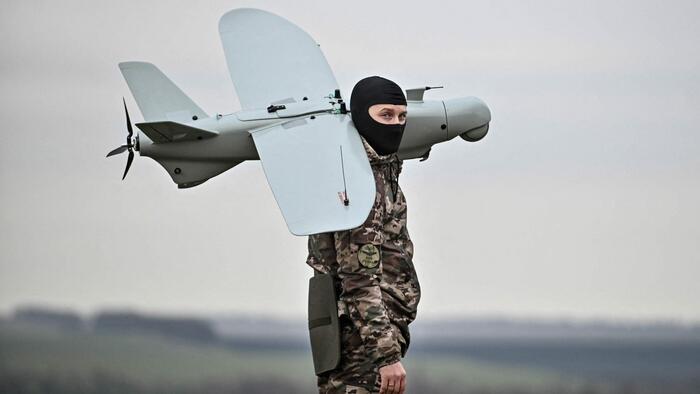Ukraine’s ongoing conflict with Russia has intensified, particularly emphasized by the latest wave of drone attacks launched by Ukrainian forces overnight. Reports indicated that the Russian military’s air defense successfully intercepted 83 drones over various regions, including Crimea. However, some of these drones managed to breach defenses, specifically striking an oil depot in Svetlograd, located in southwestern Russia. Regional officials confirmed that while the unmanned aircraft caused considerable damage to the facility, which is owned by the state oil giant Rosneft, no casualties were reported. This incident marks a continuation of nearly daily drone assaults between the two nations, establishing a new normal for their conflict.
Social media captured the aftermath, revealing a significant blaze at the oil depot that was reportedly controlled quickly by emergency services. The assaults are notable not only for their frequency but also for the scale, with the Ukrainian General Staff reporting that Russia launched a staggering 2,023 drones during October alone. The intensity of these aerial offensives on both sides has led to alarming statistics, including days where over 100 drones were sent from each country within a single day. While Ukraine’s energy infrastructure has suffered greatly, leading to frequent blackouts, Russia’s infrastructure remains largely unaffected, highlighting the disparities in resilience and capability between the two nations.
In the broader context of the conflict, Russia’s military advances in the Donetsk region have become more pronounced. Recently, it was announced that Russian forces gained control over the town of Selydove, a strategic point located southeast of the critical city of Pokrovsk. This acquisition is particularly significant as Selydove had served as a crucial staging area for Ukrainian defenses. Observations suggest that the loss of this town could severely hamper Ukraine’s ability to resist advancing Russian forces, who are pressing closer to Pokrovsk. The sustained assaults from Russian forces have put immense pressure on Ukrainian troops, with critical shortages in both artillery and manpower exacerbating their defense capabilities.
Adding to the complexity of the situation, reports from frontline Ukrainian forces indicate that they are facing relentless attacks from multiple directions. Vitaliy Milovidov, a spokesman for the 15th brigade national guard, remarked on the overwhelming troop numbers employed by Russia, which have reportedly drawn reserves from different sections of the front to maintain pressure on key locations like Selydove. The high-volume troop engagements reflect a strategic approach aimed at encircling urban areas and gradually eroding Ukrainian defenses, particularly as Russian forces continue to advance toward the strategic city of Pokrovsk.
As the conflict evolves, so too does the nature of warfare employed by both sides. The recent drone strikes highlight a shift toward more technological and asymmetric tactics, with each side employing drones to inflict damage and disrupt supply lines. The attacks on critical infrastructure, especially in Russia, aim to showcase Ukraine’s operational capabilities, while concurrently applying pressure on Russian logistics. Both nations appear locked in an escalating cycle of retaliatory strikes, further entrenching the conflict and complicating prospects for resolution.
In summary, the situation between Ukraine and Russia remains precarious and marked by a series of aggressive military operations. From drone attacks that breach defenses to significant ground offensives reshaping control over key territories, the conflict is intensifying. As both sides adapt their strategies, the implications for civilian populations and infrastructure continue to be dire, with Ukraine facing extensive challenges in maintaining essential services for its citizens while Russia seeks to consolidate its territorial gains. With tensions remaining high and the humanitarian toll mounting, the path forward remains uncertain, highlighting the urgent need for diplomatic efforts to address the ongoing crisis.

